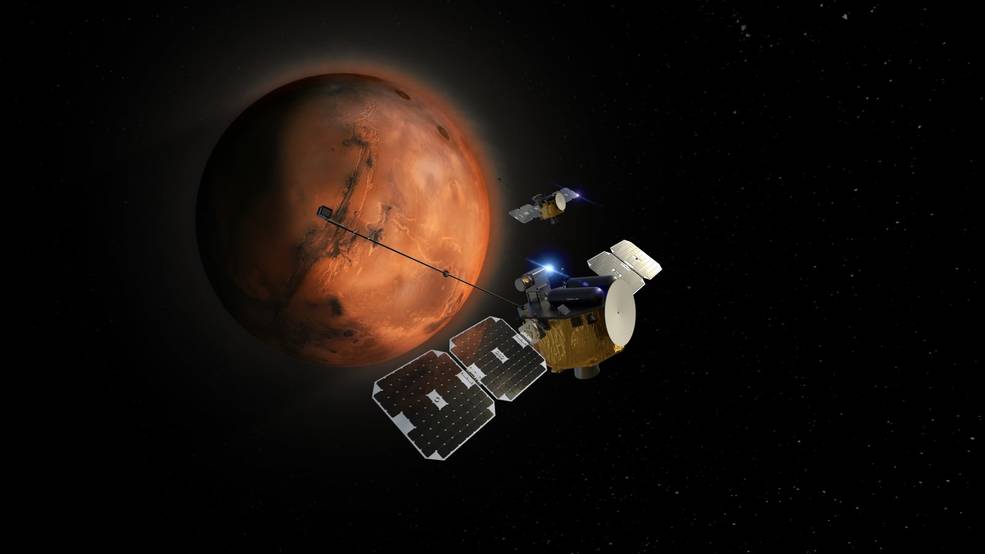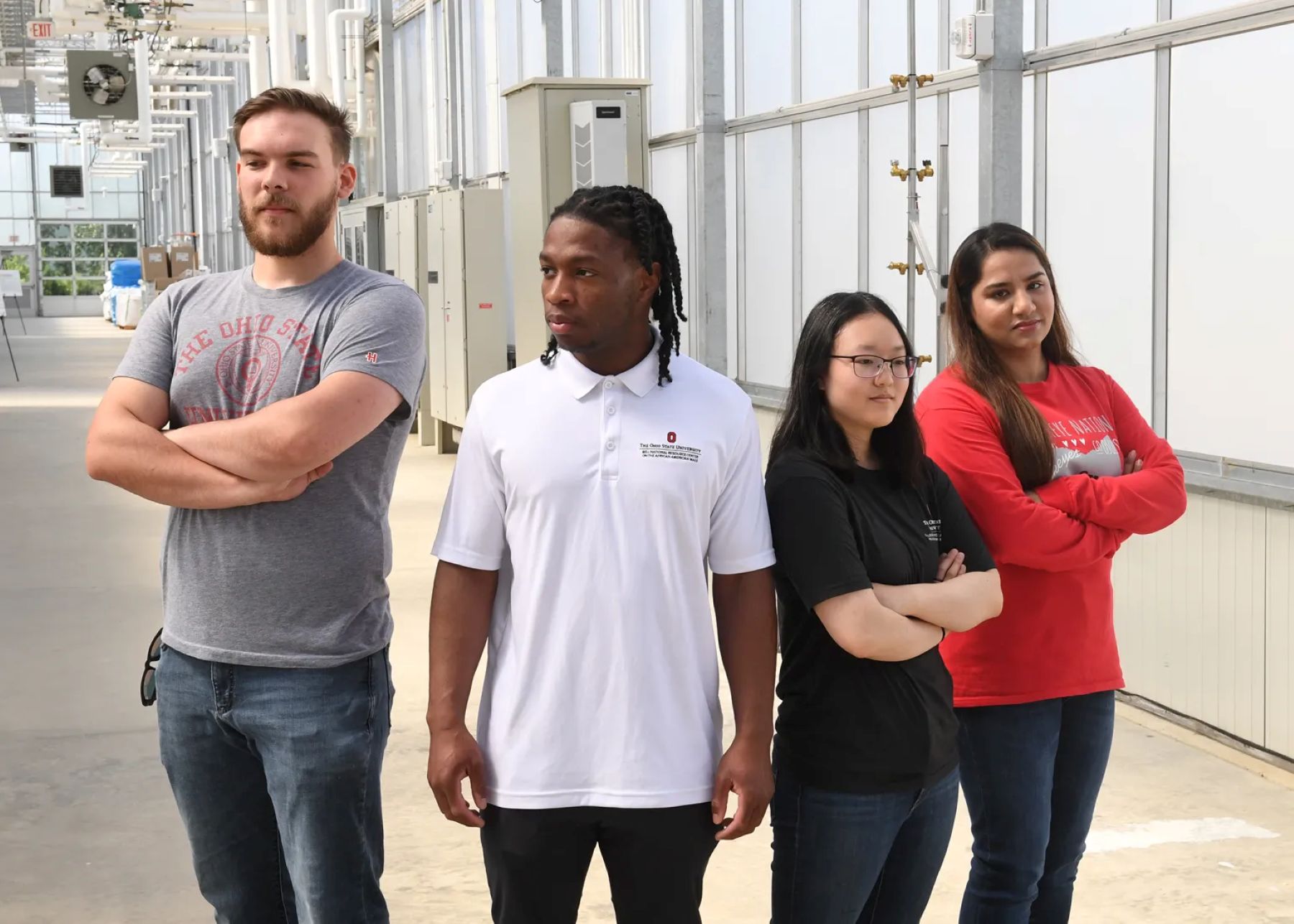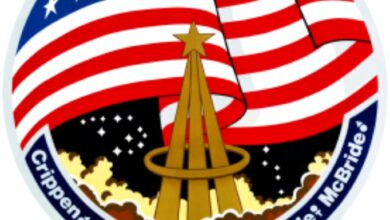25 Years Ago: STS-96 Resupplies the Space Station

On May 27, 1999, the second space station assembly and logistics mission began. The main goals of STS-96, designated as the 2A.1 mission in the overall assembly sequence, included resupplying and repairing the fledgling orbital facility, consisting of the Zarya and Node 1 modules assembled during STS-88 in December 1998. The multinational seven-member crew transferred nearly two tons of supplies from the shuttle’s Spacehab double module and water to the crew-tended space station. Two of the astronauts conducted a spacewalk to install equipment on the outside of the facility. The astronauts also conducted repairs inside the station. After six days of docked operations in low Earth orbit, the crew departed the repaired and resupplied space station, making a rare night landing.
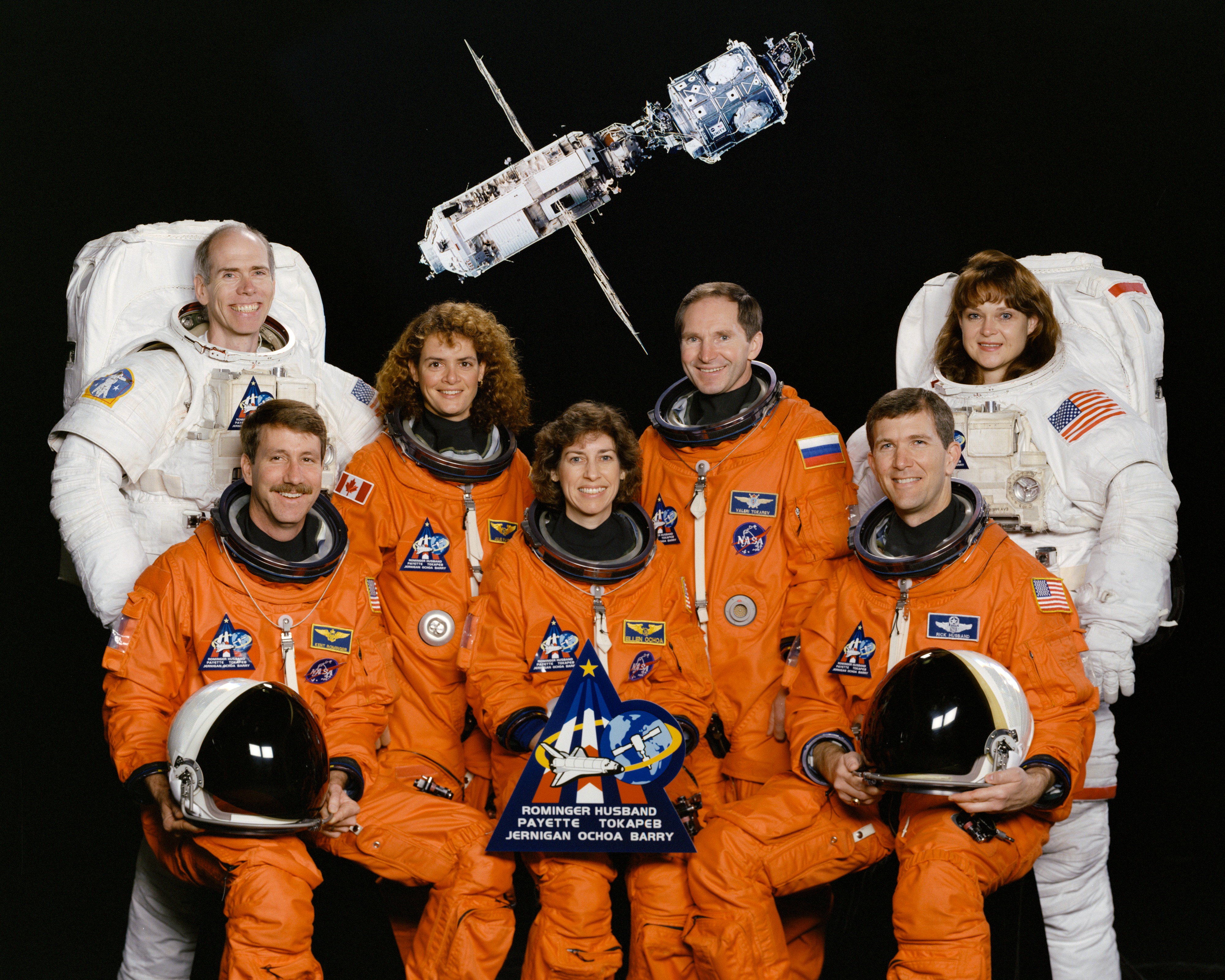
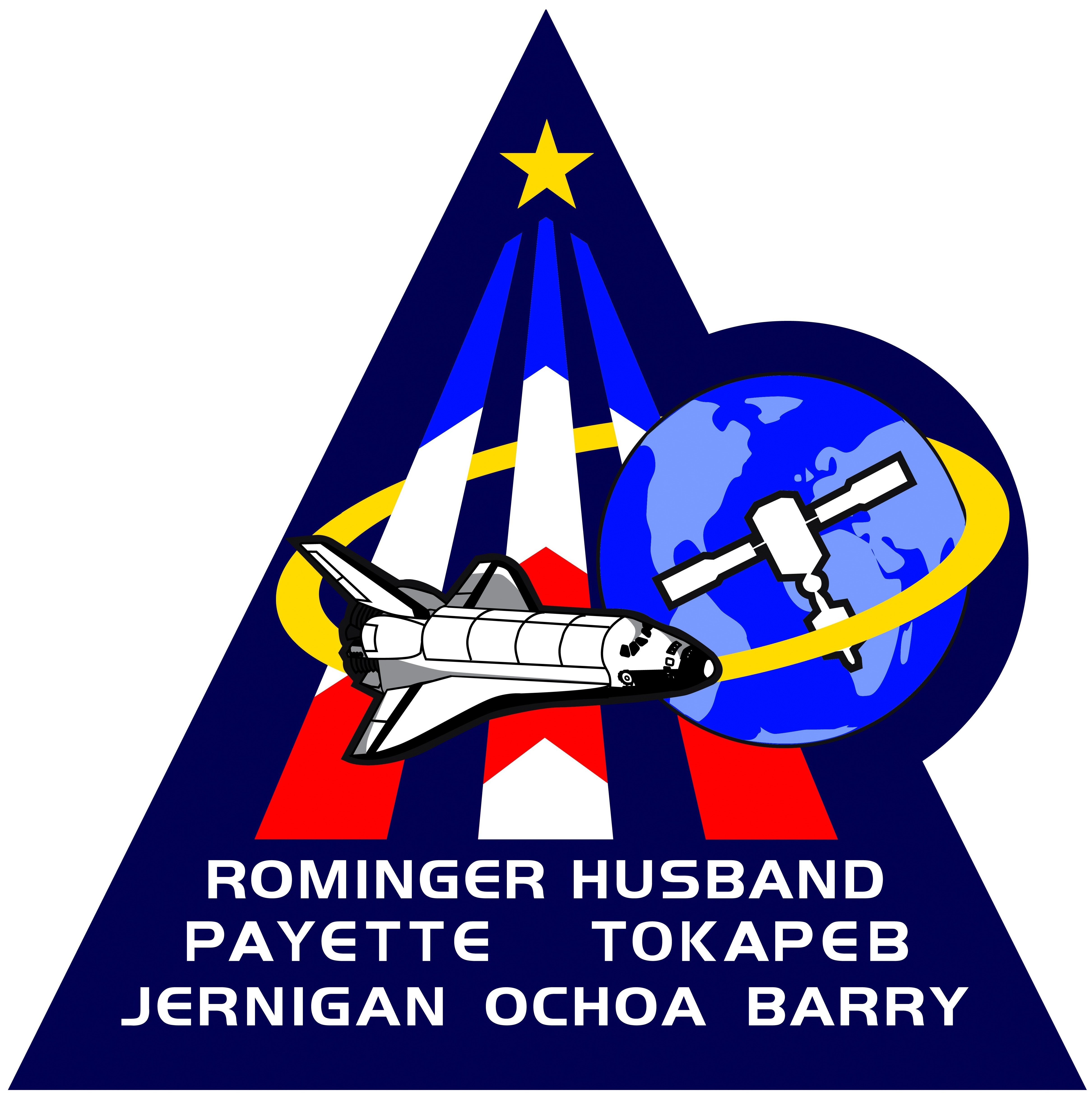
Left: The STS-96 crew of Daniel T. Barry, left, Kent V. Rominger, Julie Payette of the Canadian Space Agency, Ellen Ochoa, Valeri I. Tokarev of Roscosmos, Rick D. Husband, and Tammy E. Jernigan. Right: The STS-96 crew patch.
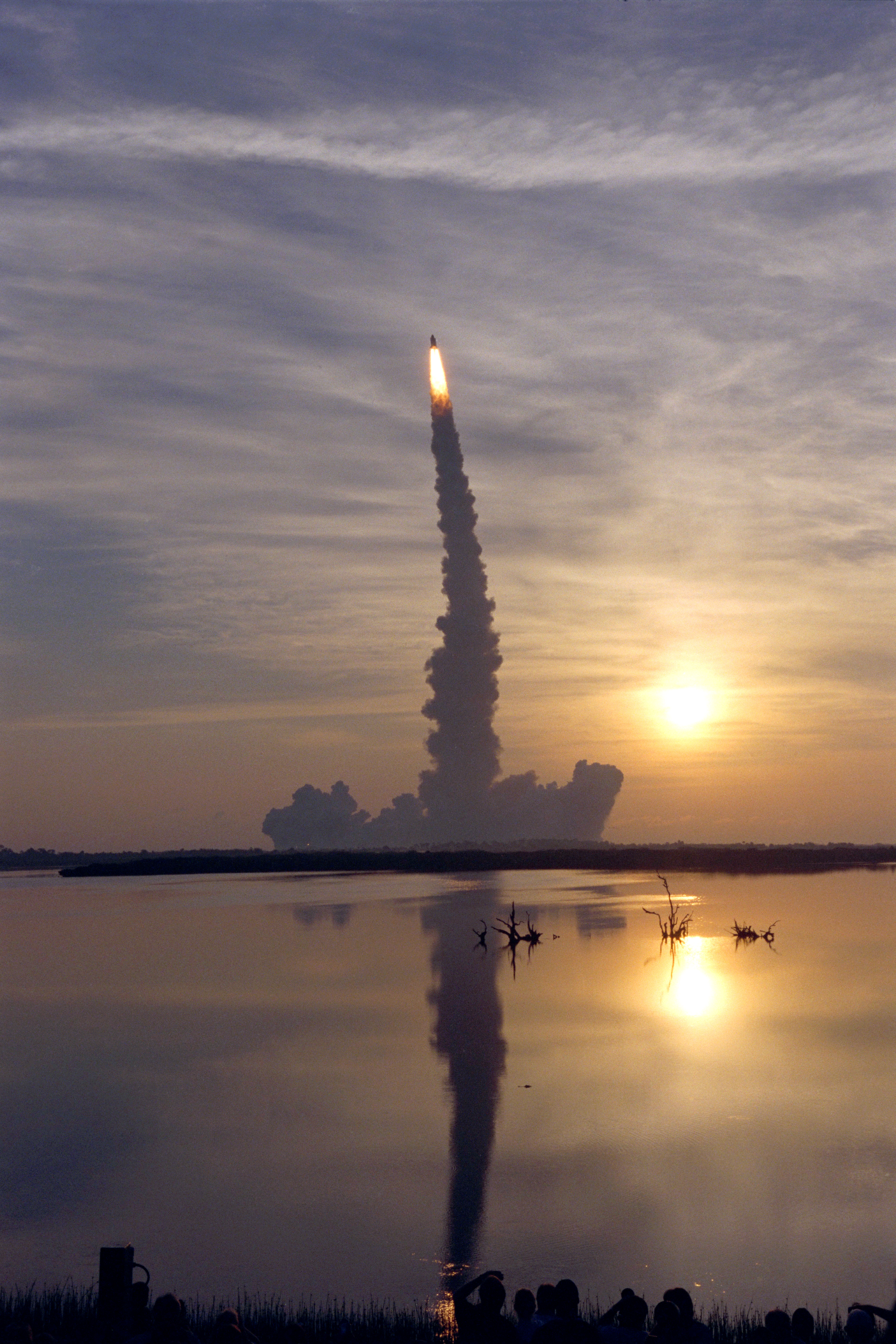
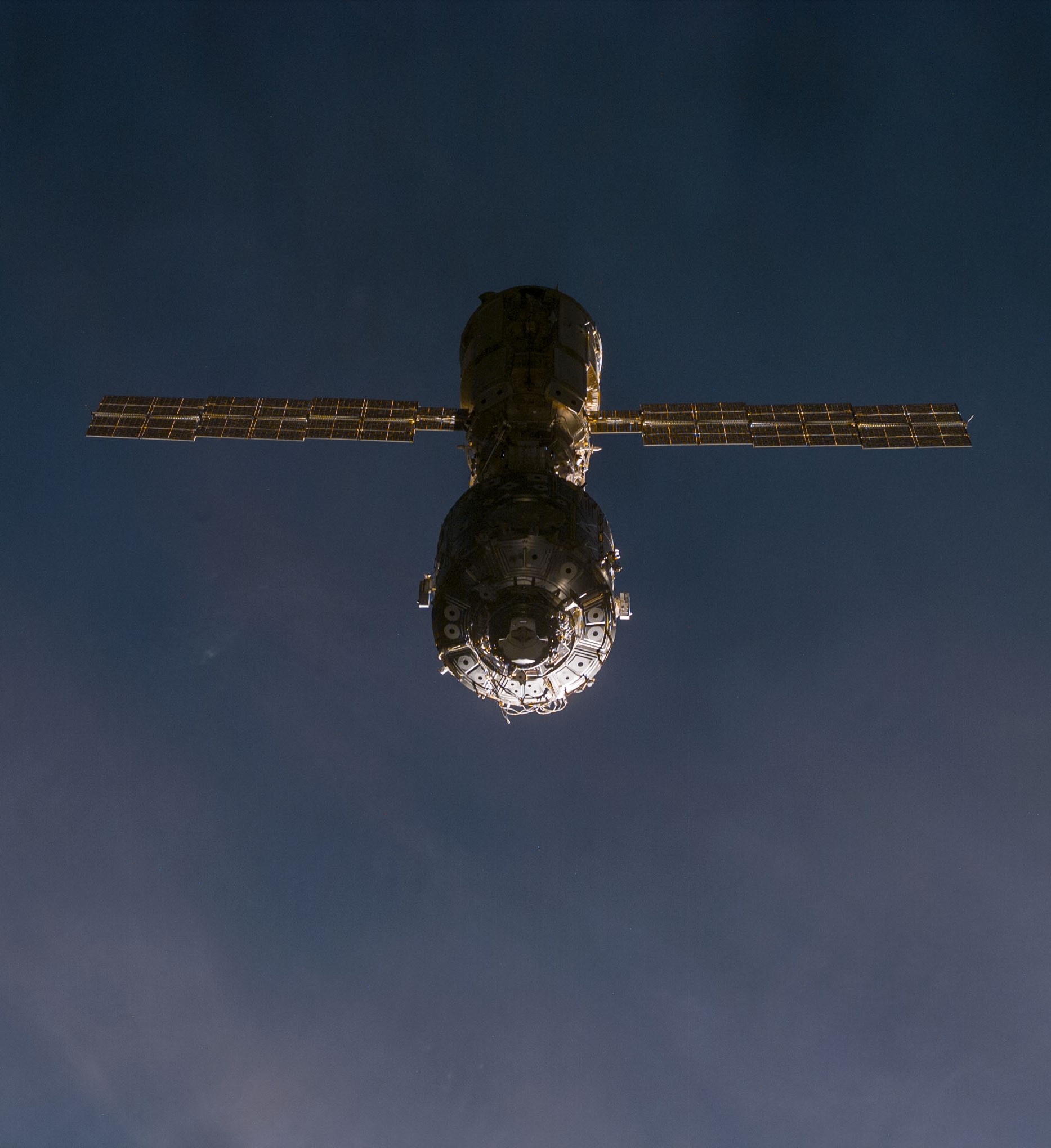
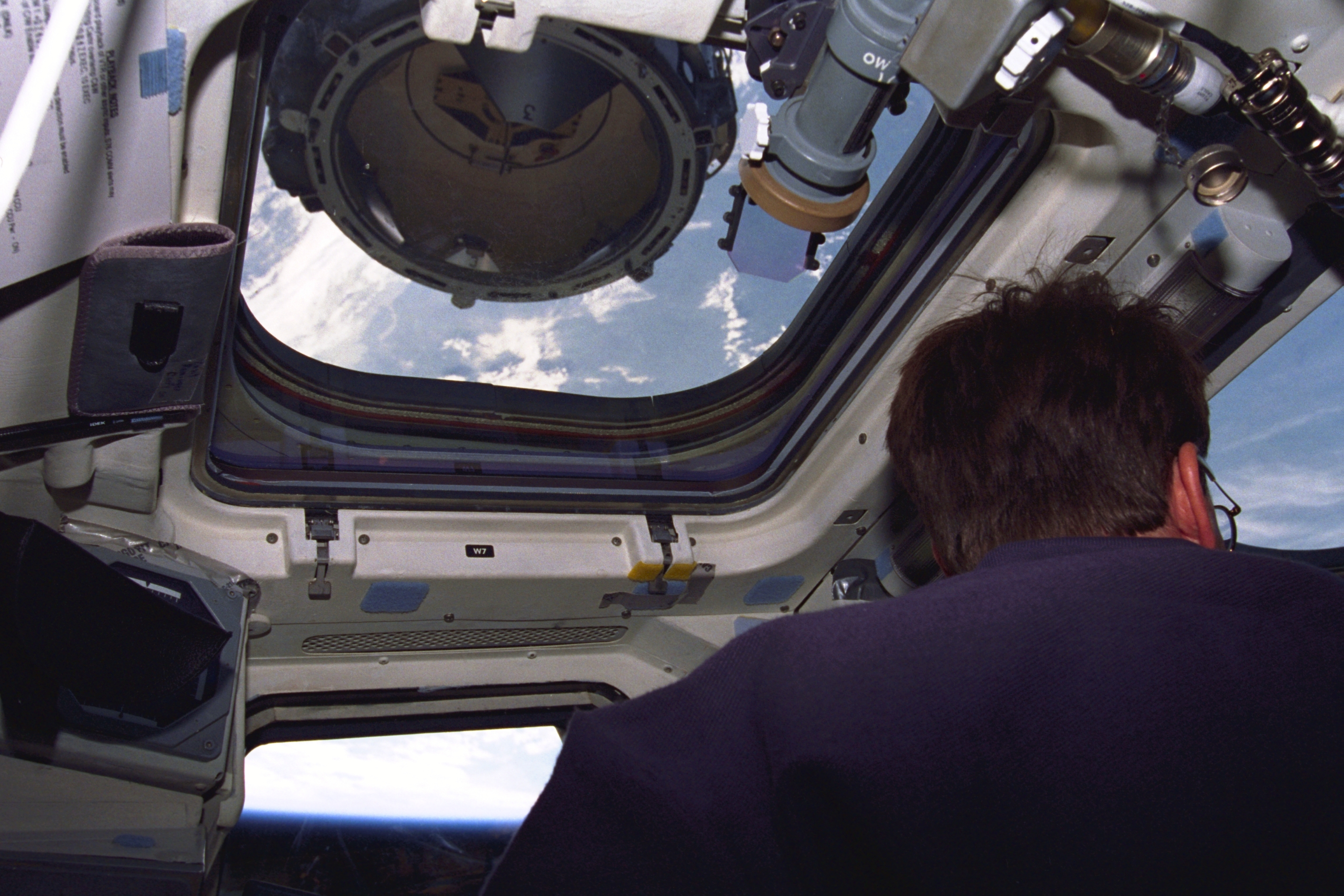
Left: Launch of Discovery on Shuttle mission STS-96. Middle: View of the International Space Station from Discovery during the rendezvous maneuver. Right: The Node 1’s Pressurized Mating Adapter appears in on Discover’s overhead windows just before docking.
The second space shuttle assembly and resupply mission to the space station lifted off just after sunrise on May 27, 1999, from Launch Pad 39B at NASA’s Kennedy Space Center (KSC) in Florida. Its multinational seven-person crew included Commander Kent V. Rominger, Pilot Rick D. Husband, and Mission Specialists Tamara “Tammy” E. Jernigan, Ellen Ochoa, Daniel T. Barry, Julie Payette of the Canadian Space Agency, and Valeri I. Tokarev representing Roscosmos. The flight marked the first time a space crew included three women since STS-40 in 1991. Less than two days after launch, Rominger guided Discovery to the first docking with the two-module space station at the Pressurized Mating Adapter-2 (PMA-2), attached to Node 1. In preparation for the next day’s spacewalk, the astronauts reduced the pressure in the shuttle’s cabin from the usual 14.7 pounds per square inch (psi) to 10.2 psi to reduce the time needed for spacewalkers Jernigan and Barry to breathe pure oxygen to purge their bodies of nitrogen to prevent decompression sickness, also called the bends.
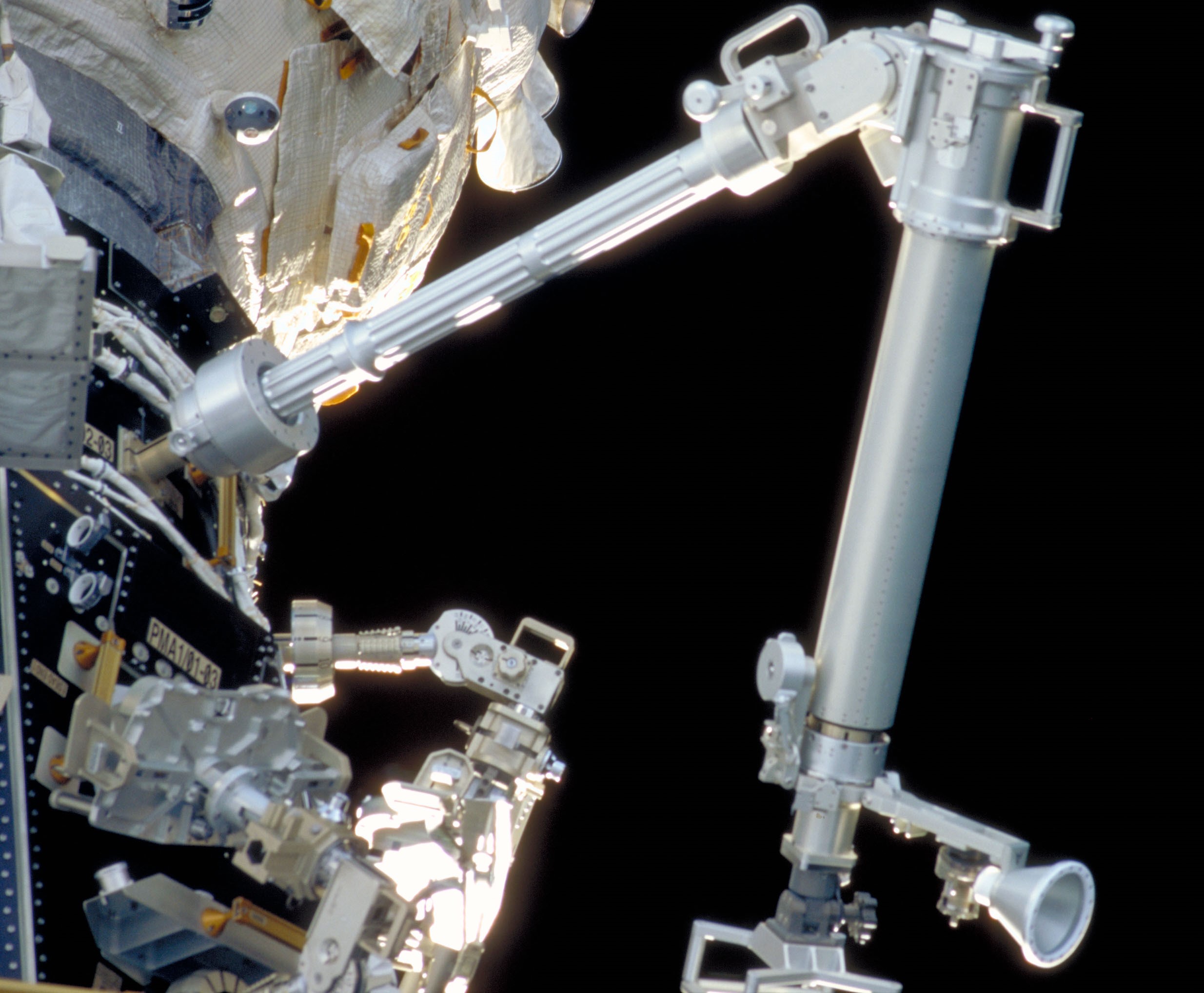
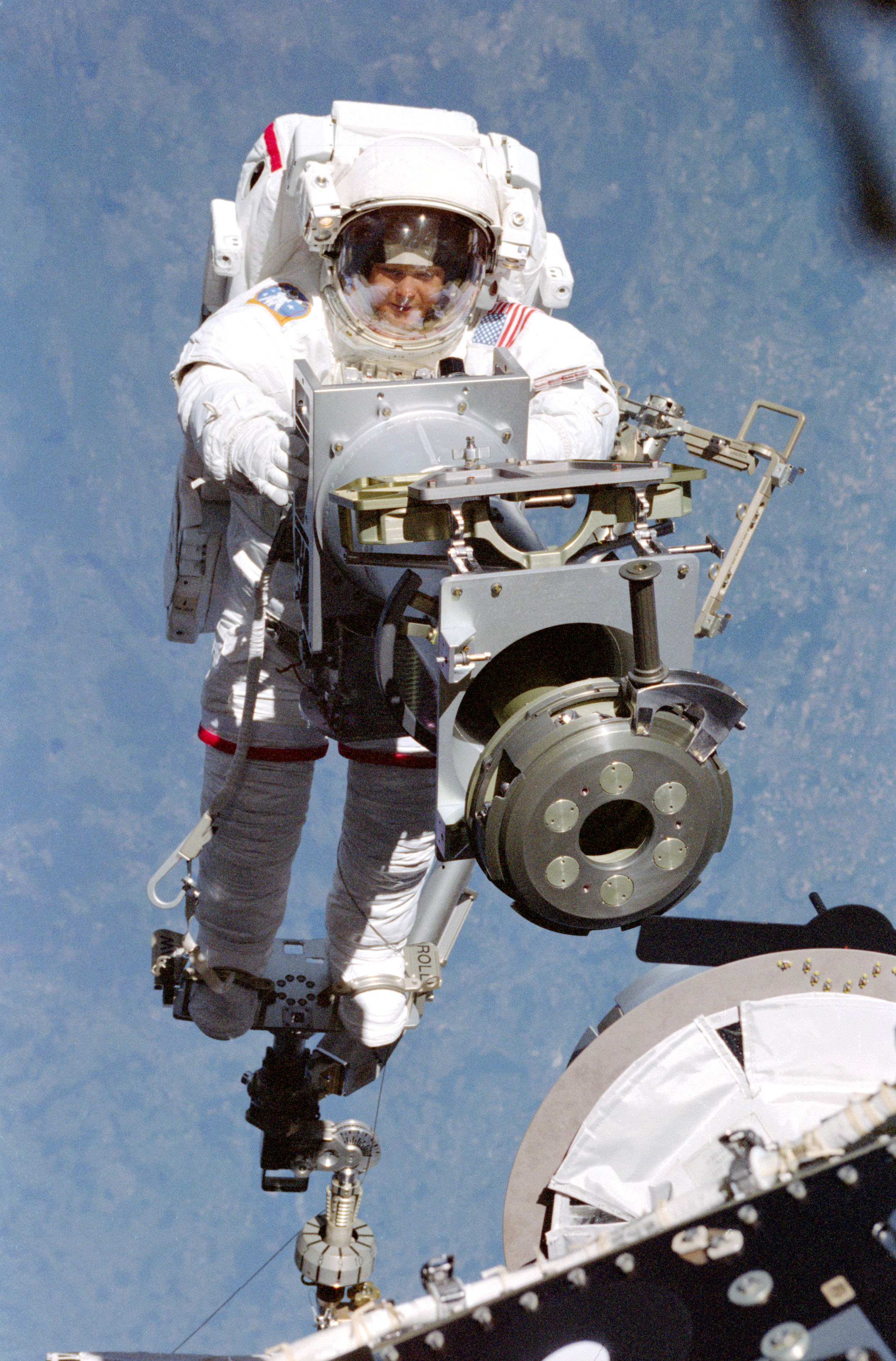
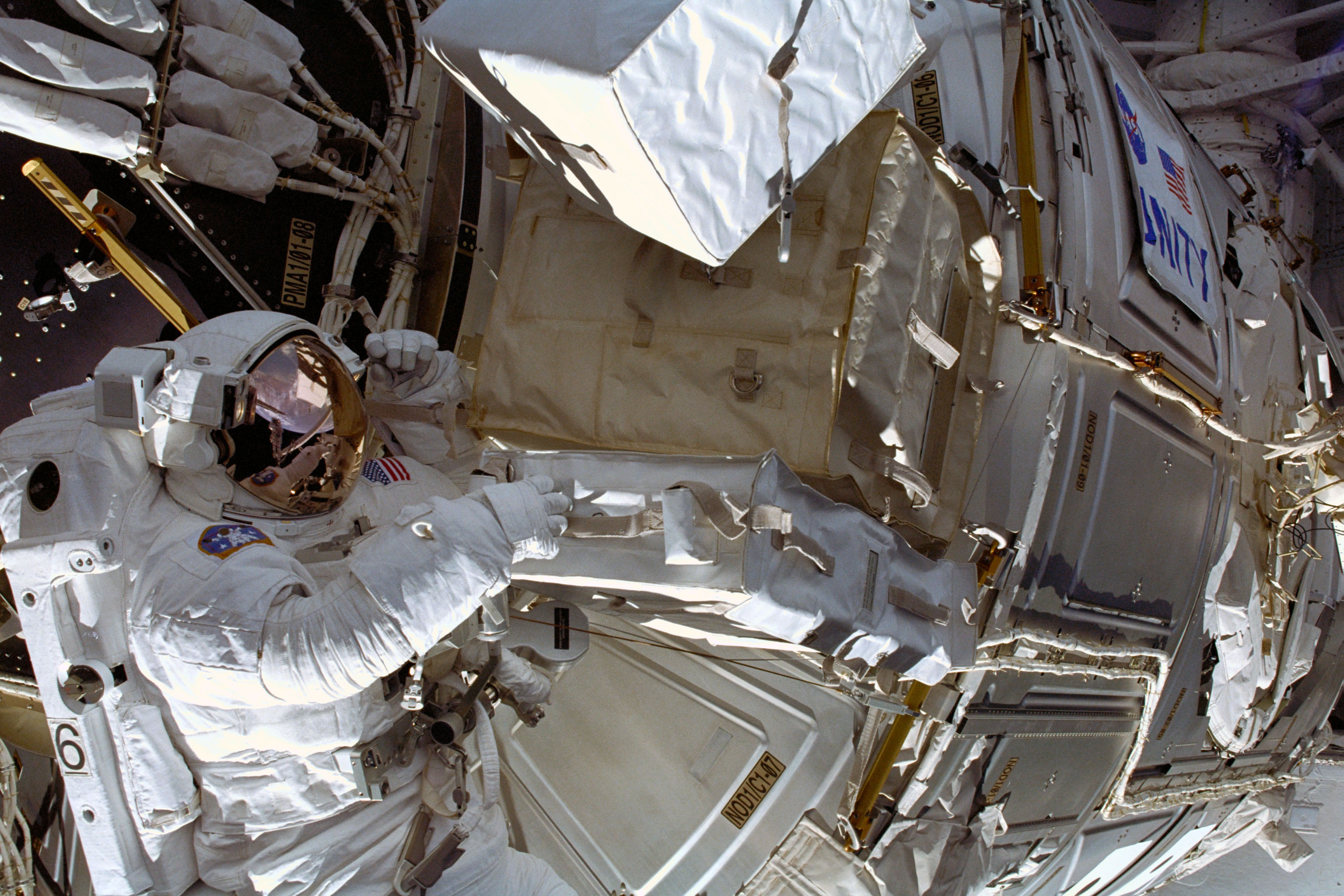
Left: The Orbital Replacement Unit Transfer Device installed on the Pressurized Mating Adapter during the STS-96 spacewalk. Middle: Tamara E. Jernigan carries the Strela boom to the Zarya module. Right: Daniel T. Barry mounts a stowage bag on Node 1.
The day after docking, Jernigan and Barry exited the Shuttle’s airlock to begin one of the flight’s major objectives. From inside the Shuttle, Payette coordinated the spacewalk activities and Ochoa operated the robotic arm to position Jernigan. Jernigan and Barry first installed the American crane, also known as the Orbital Replacement Unit (ORU) Transfer Device onto its socket on PMA-1, the tunnel joining Node 1 and Zarya. Then they moved the Russian Strela boom and installed it on PMA-2. Next, they installed a pair of foot restraints onto PMA-1 and then installed three large tool bags onto Node 1. Jernigan and Barry completed the spacewalk in 7 hours and 55 minutes.
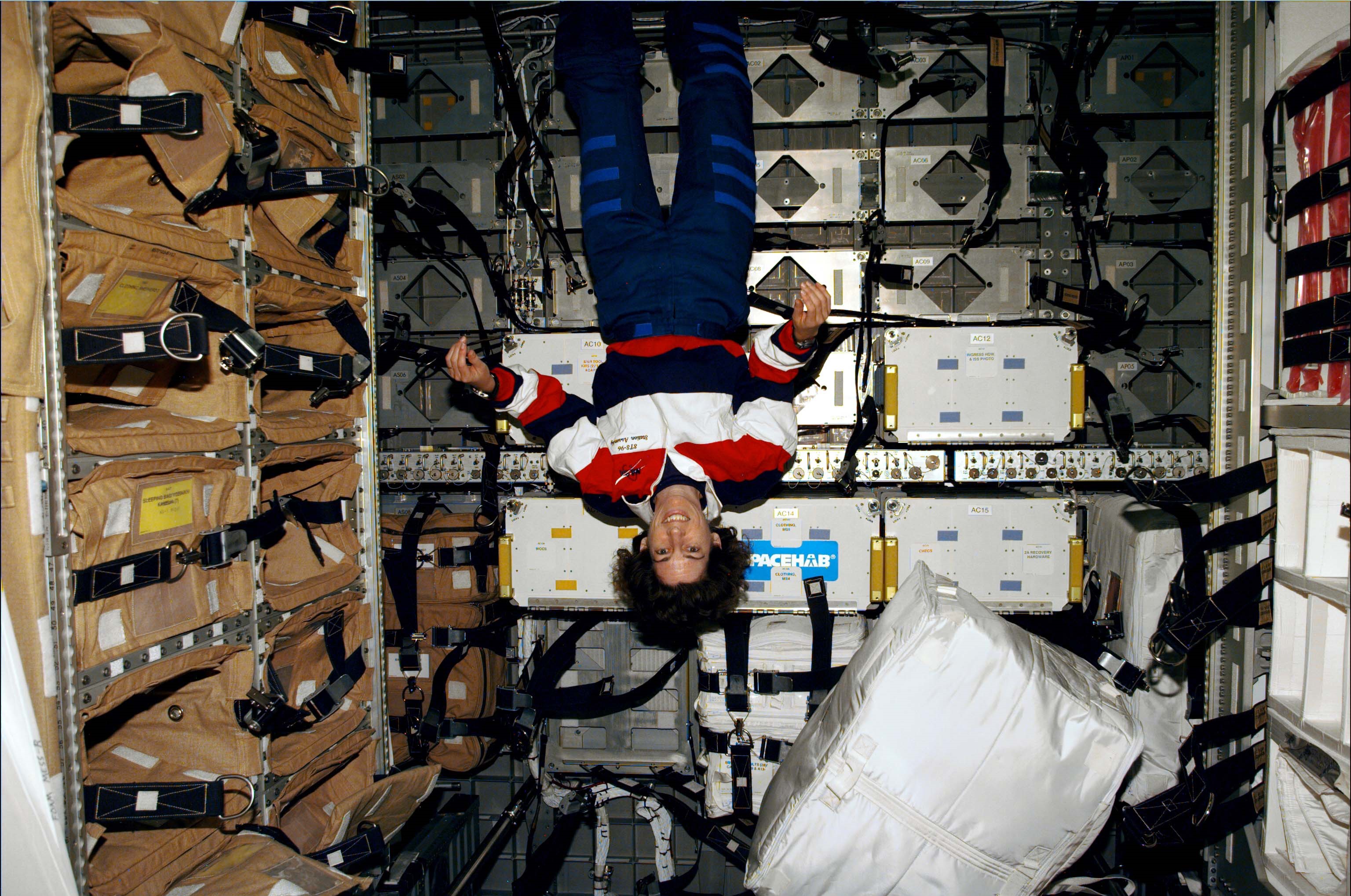
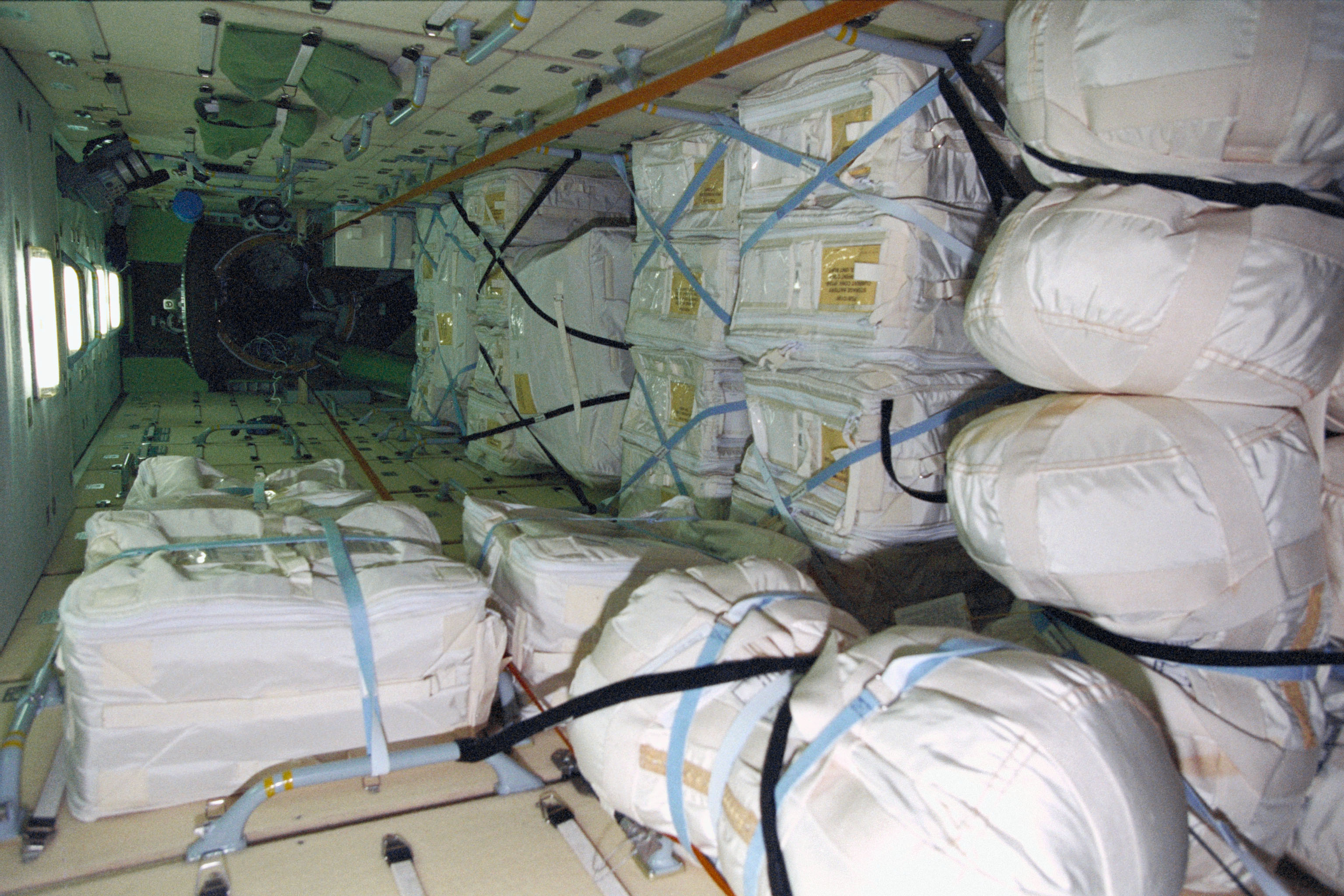
Left: Ellen Ochoa inside the double Spacehab module. Right: Stowage bags transferred into Zarya.
The day after the spacewalk, having repressurized the shuttle cabin to 14.7 psi, the astronauts opened the hatches between the shuttle and the station, first into the PMA-2, then into Node 1, and finally into Zarya. Jernigan and Tokarev entered the station first, and the rest of the crew followed shortly after. Over the course of flight days 5 and 6, Payette and Tokarev replaced all 18 charge/discharge units of Zarya’s six batteries, located under the floor of the module, to improve the batteries’ performance. Husband and Barry repaired the Node 1 S-band radio, part of the station’s early communications system. The entire crew spent the next few days transferring 3,567 pounds of supplies, clothing, sleeping bags, spare parts, medical equipment, and other hardware from the Spacehab double module into the station. They also transferred 84 gallons of water produced by the shuttle’s fuel cells for later use by the station’s first resident crew, then planned for arrival in early 2000. They returned about 200 pounds of items from the station to Discovery. They spent nearly 80 hours inside the station before closing the hatches on June 2, the eighth flight day of the mission. Rominger and Husband pulsed Discovery’s Reaction Control System (RCS) thrusters 17 times to raise the station’s orbit by six miles to 246 by 241 miles.
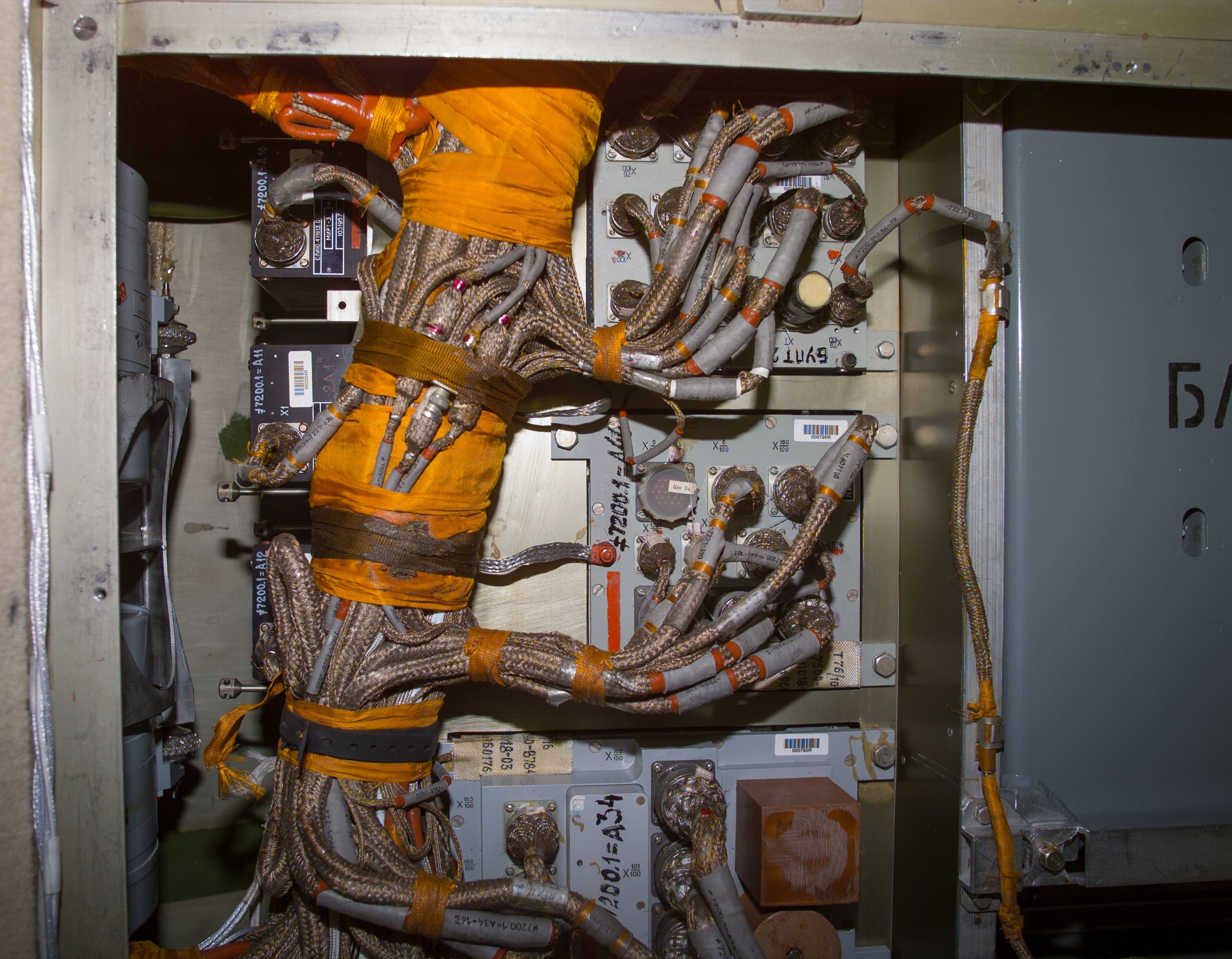
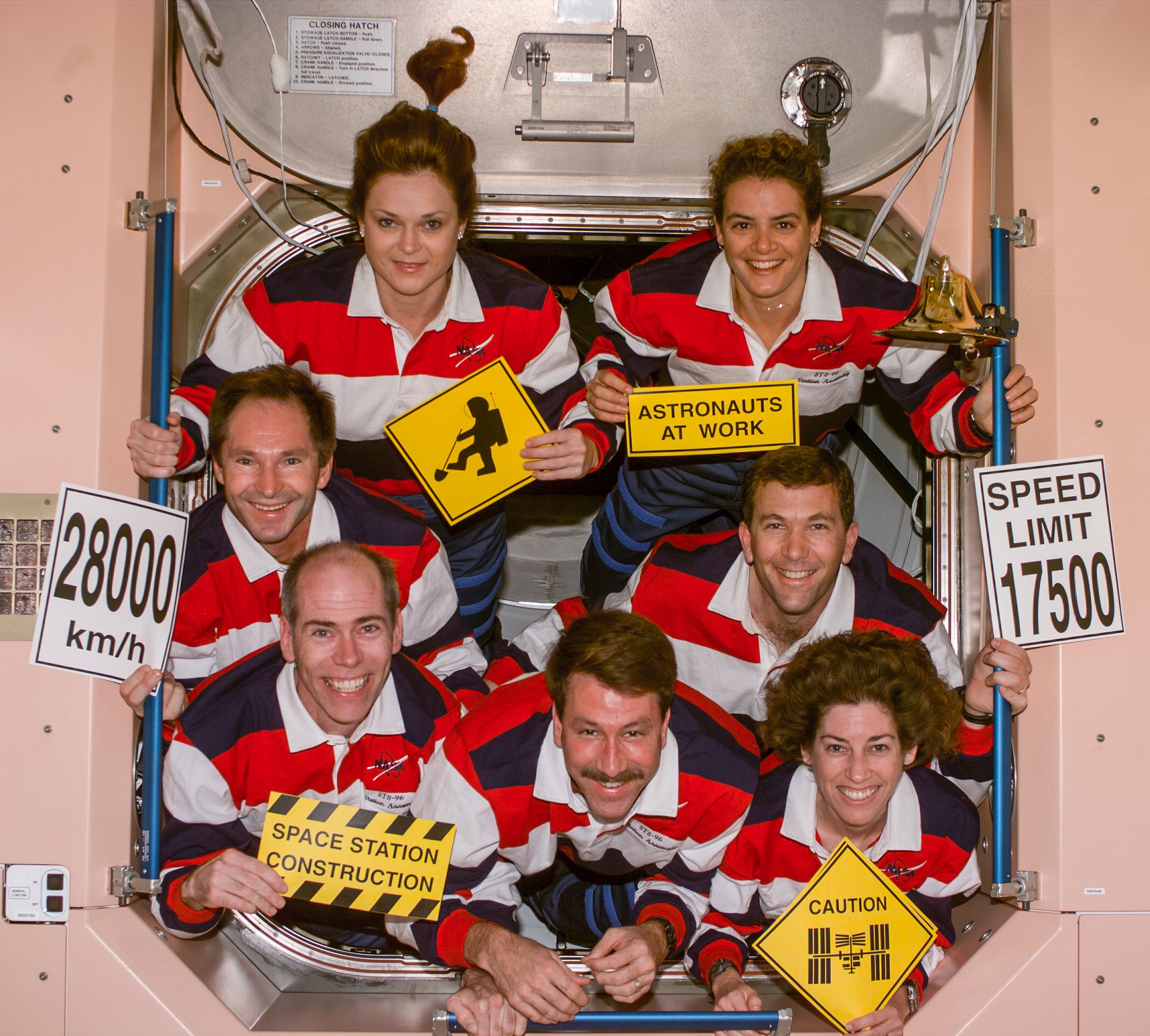
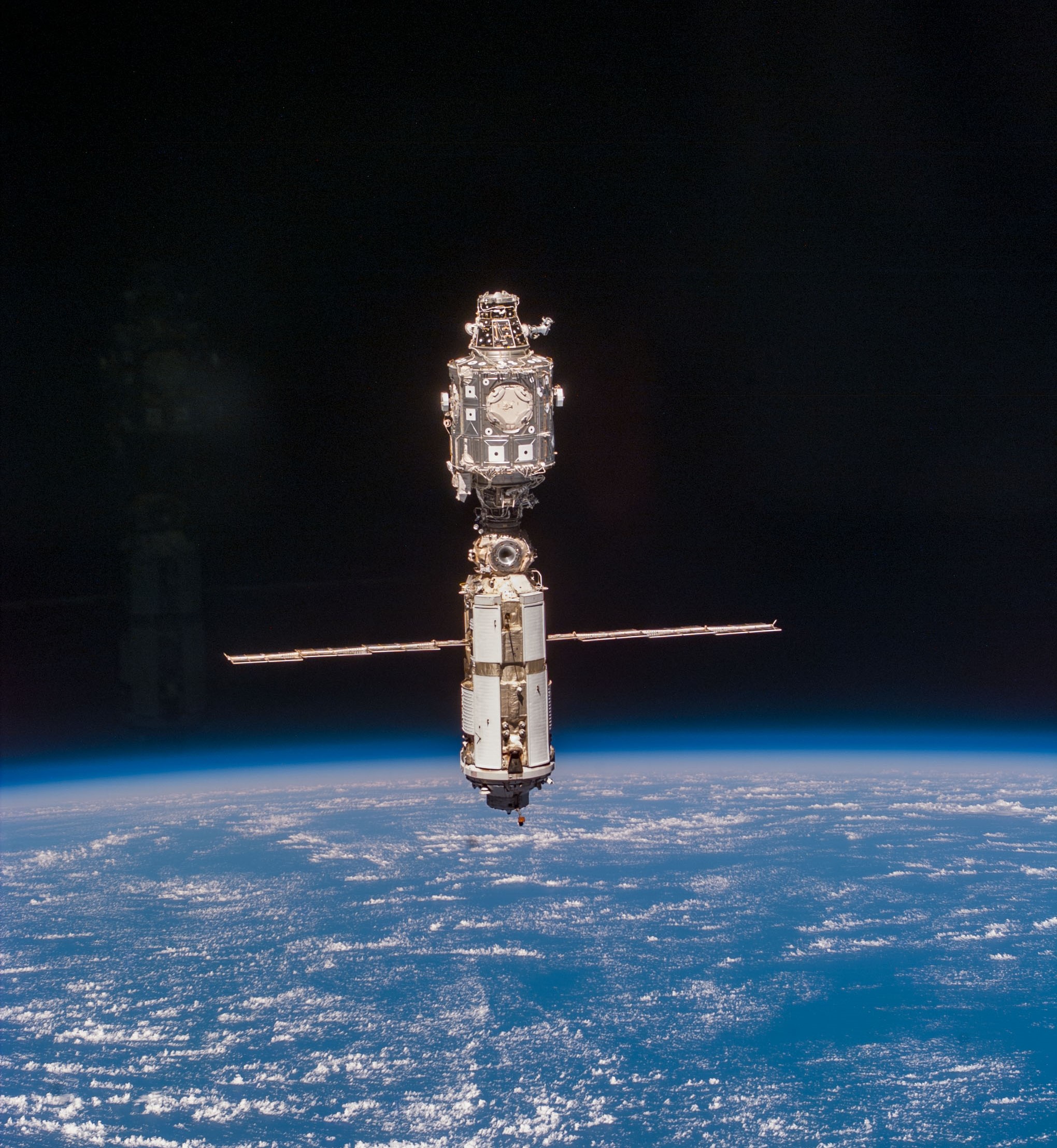
Left: Battery charge-discharge units in Zarya after replacement. Middle: Inflight photo of the STS-96 crew in Node 1. Right: A resupplied and refurbished space station as seen from Discovery during its departure.
On June 3, with Husband at the controls, Discovery undocked from the space station and completed a 2.5-revolution fly around of the refurbished facility, with the crew taking photographs to document its condition. After departing from the station, Rominger and Husband practiced shuttle landings using a laptop-based simulator in preparation for the actual landing two days later. In addition, the astronauts added to their trove of Earth observation photos.
On flight day 10, the astronauts’ last full day in space, they deployed the Student-Tracked Atmospheric Research Satellite for Heuristic International Networking Equipment (STARSHINE) satellite from Discovery’s payload bay. STARSHINE consisted of an 87-pound hollow aluminum sphere 19 inches in diameter covered with 878 mirrors. Thousands of students in 18 countries polished the mirrors. The Naval Research Laboratory in Washington, D.C. built the sphere and attached the mirrors. The students monitored sightings of the satellite as it orbited the Earth, the Sun reflecting off its multiple mirrors. The astronauts tested Discovery’s RCS thrusters, Auxiliary Power Units, and Flight Control Surfaces in preparation for the next day’s re-entry and landing.
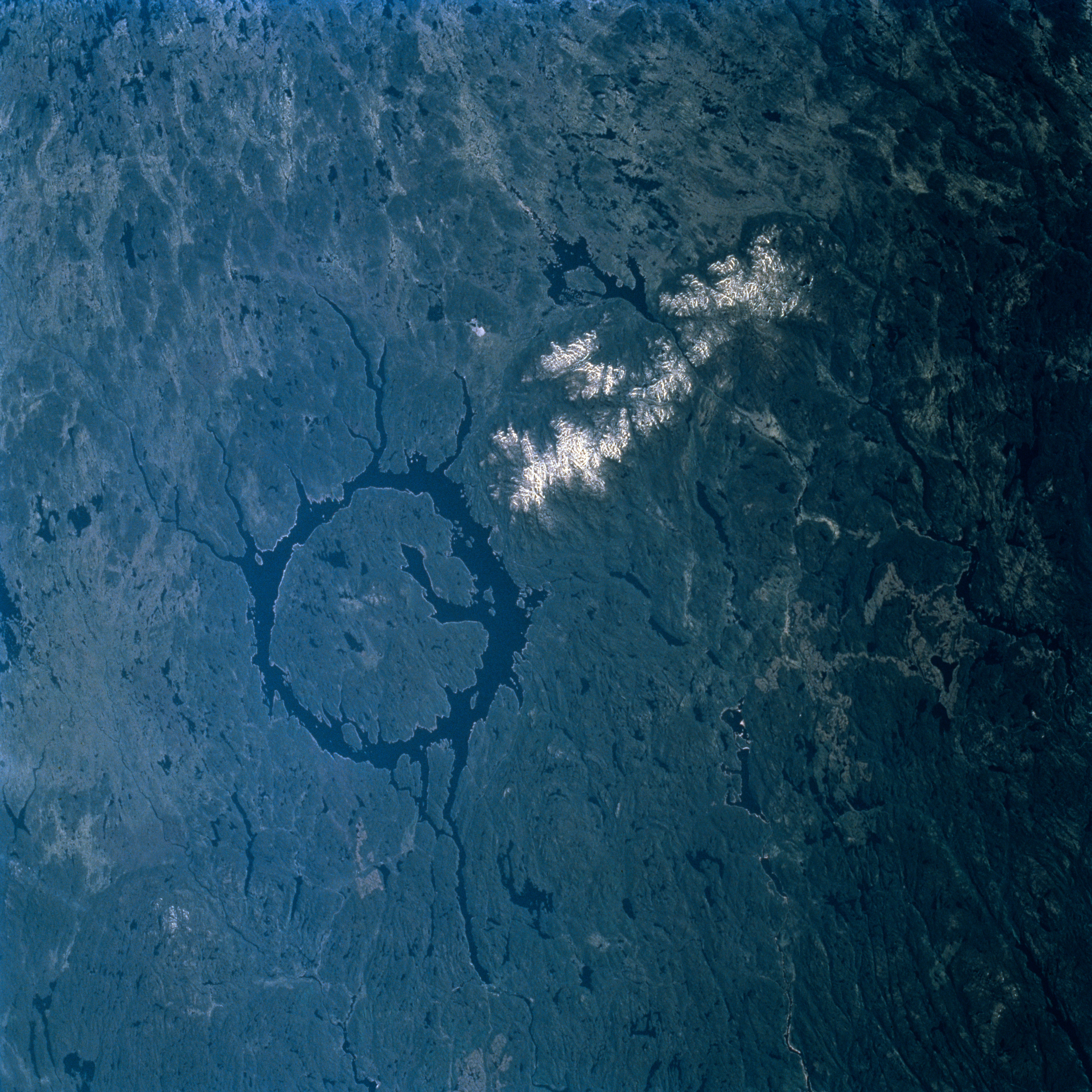
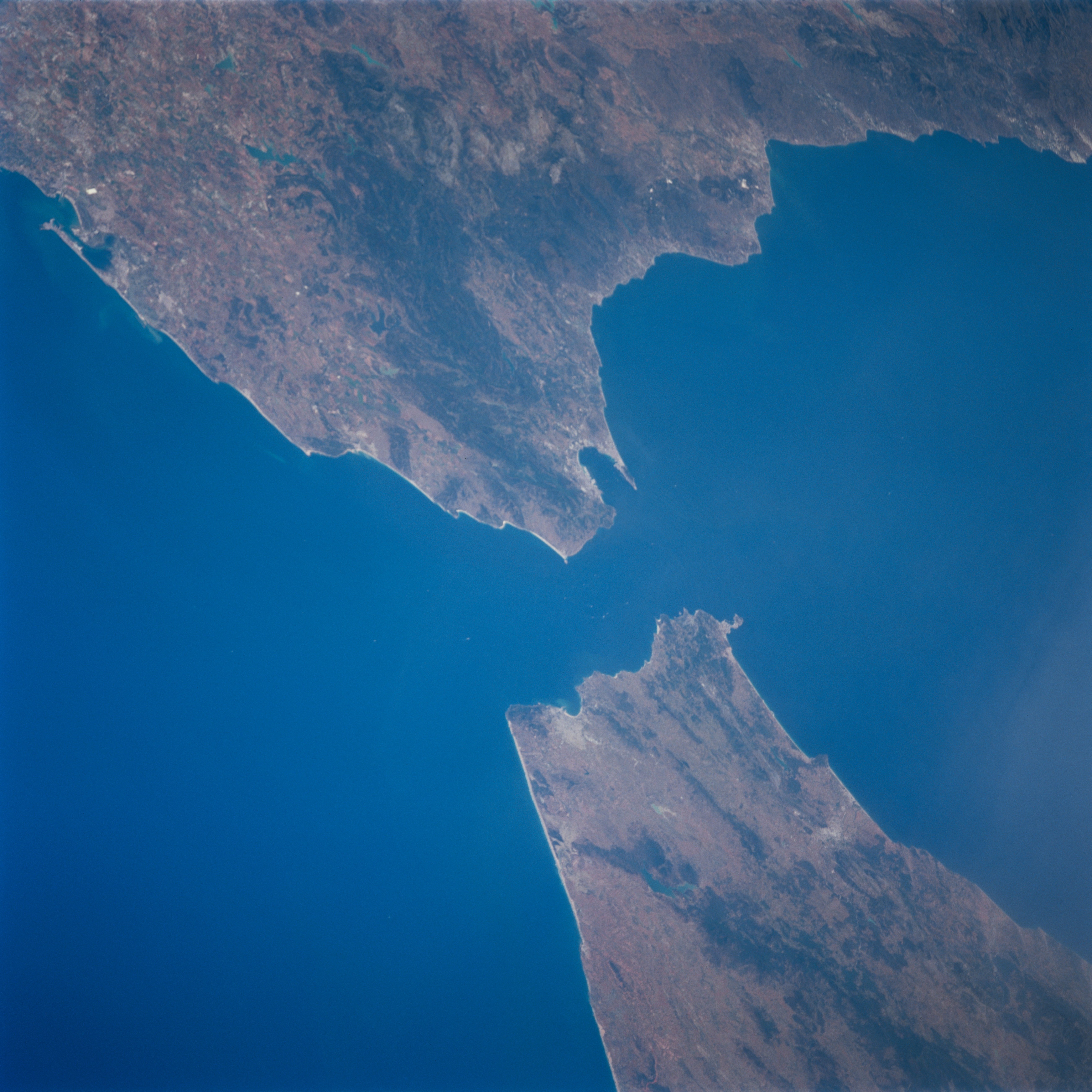
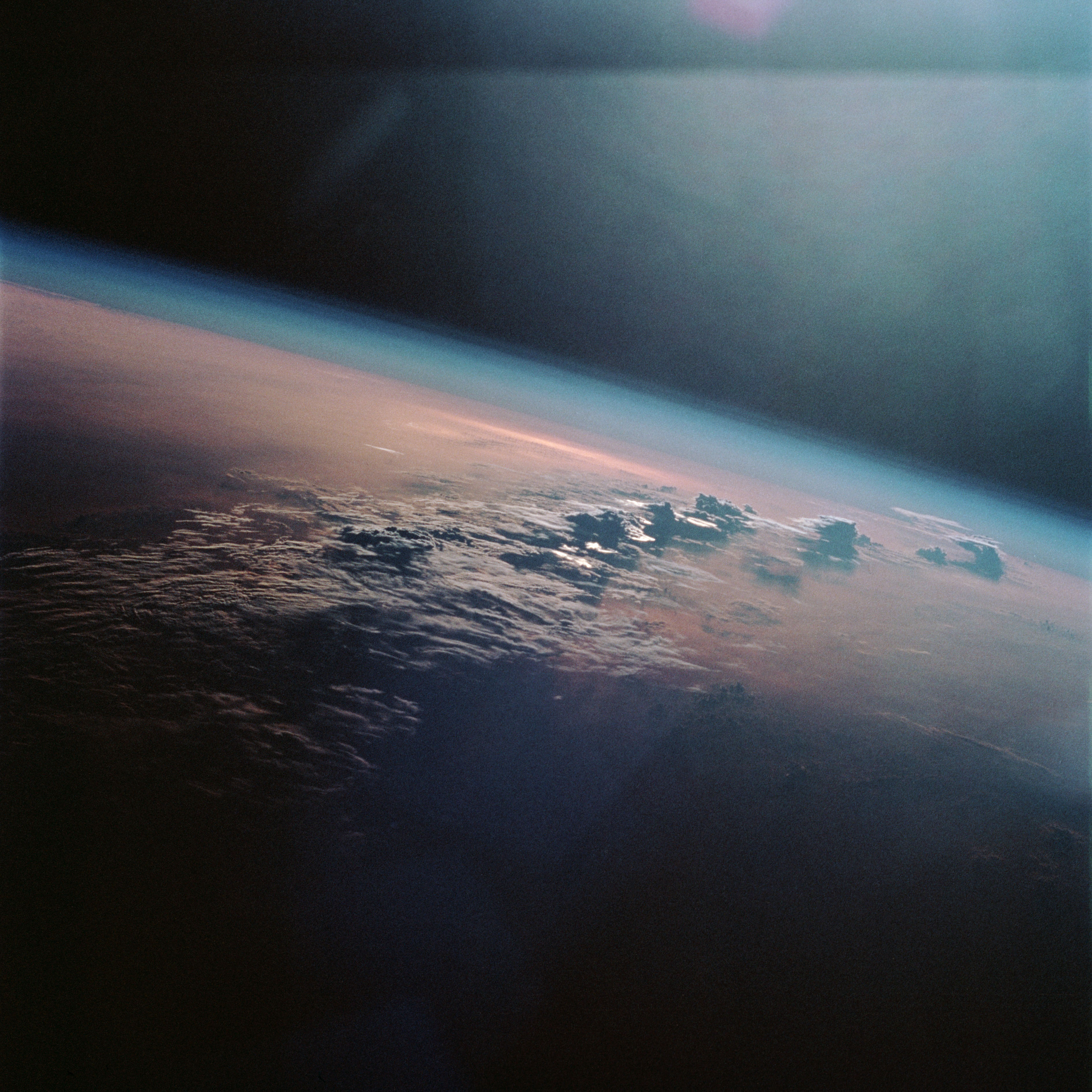
Earth observation photographs from STS-96. Left: The Manicougan impact feature in Québec, Canada. Middle: The Straits of Gibraltar. Right: Sunlit clouds over the Indian Ocean.
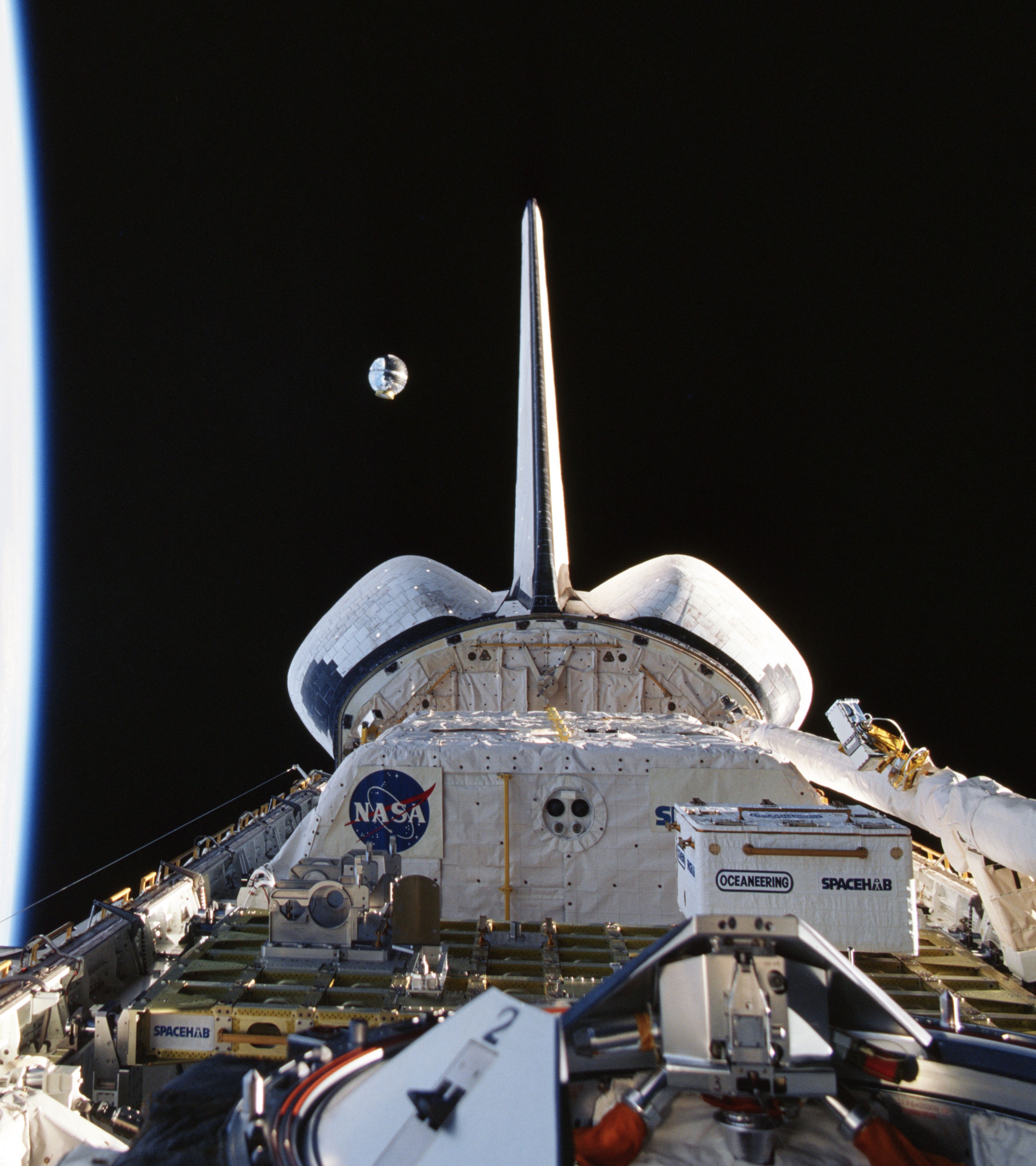
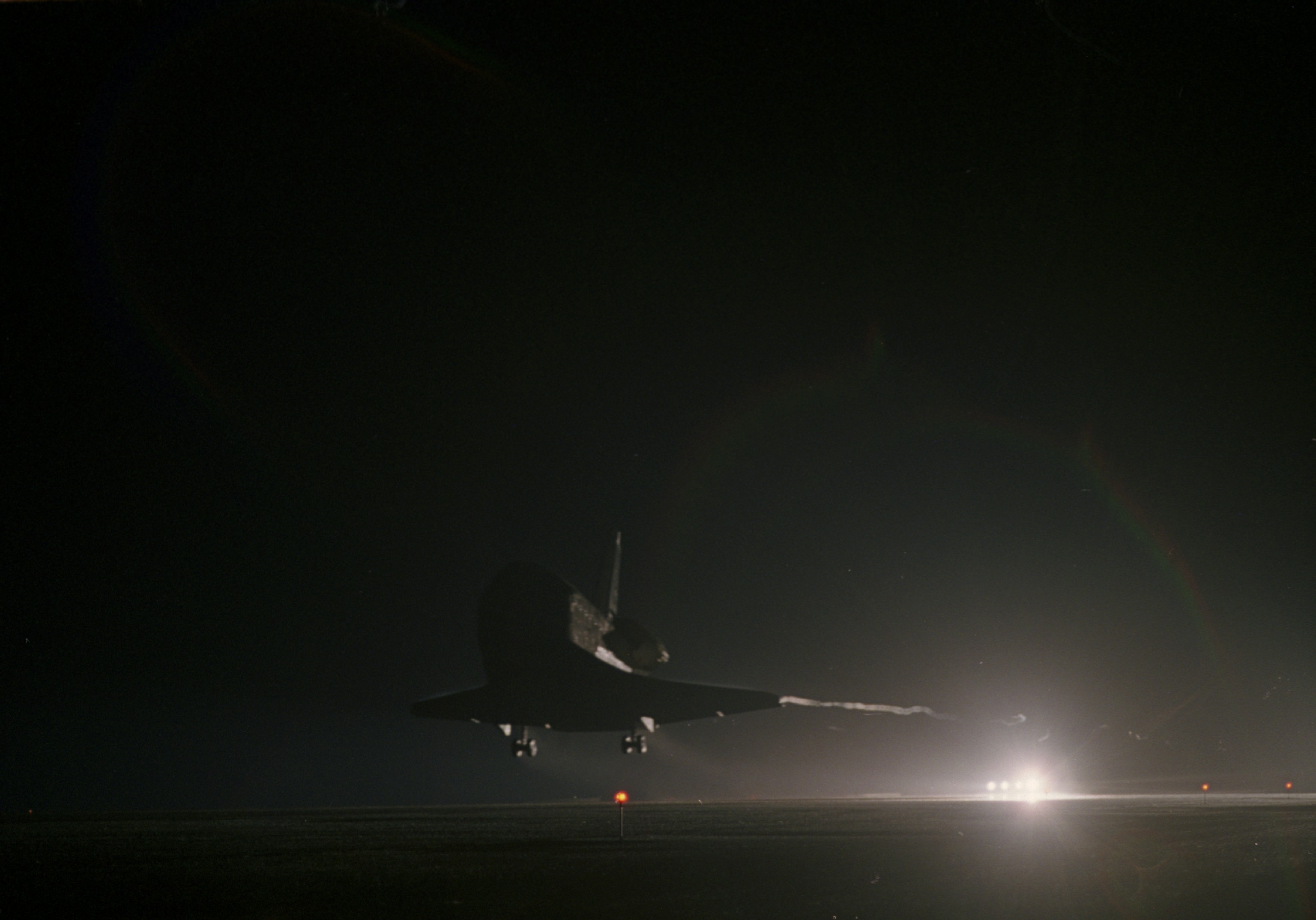
Left: Deployment of the STARSHINE student satellite. Right: Discovery makes a smooth night landing at NASA’s Kennedy Space Center in Florida.
On June 6, the astronauts closed Discovery’s payload bay doors, put on their launch and entry suits, strapped into their seats, and fired the Shuttle’s engines for the trip back to Earth. Rominger guided Discovery to a smooth night landing on the Shuttle Landing Facility at KSC, ending a highly successful mission to prepare the space station for future occupants. The flight lasted 9 days 19 hours 13 minutes.
Enjoy the crew narrate a video about the STS-96 mission.

